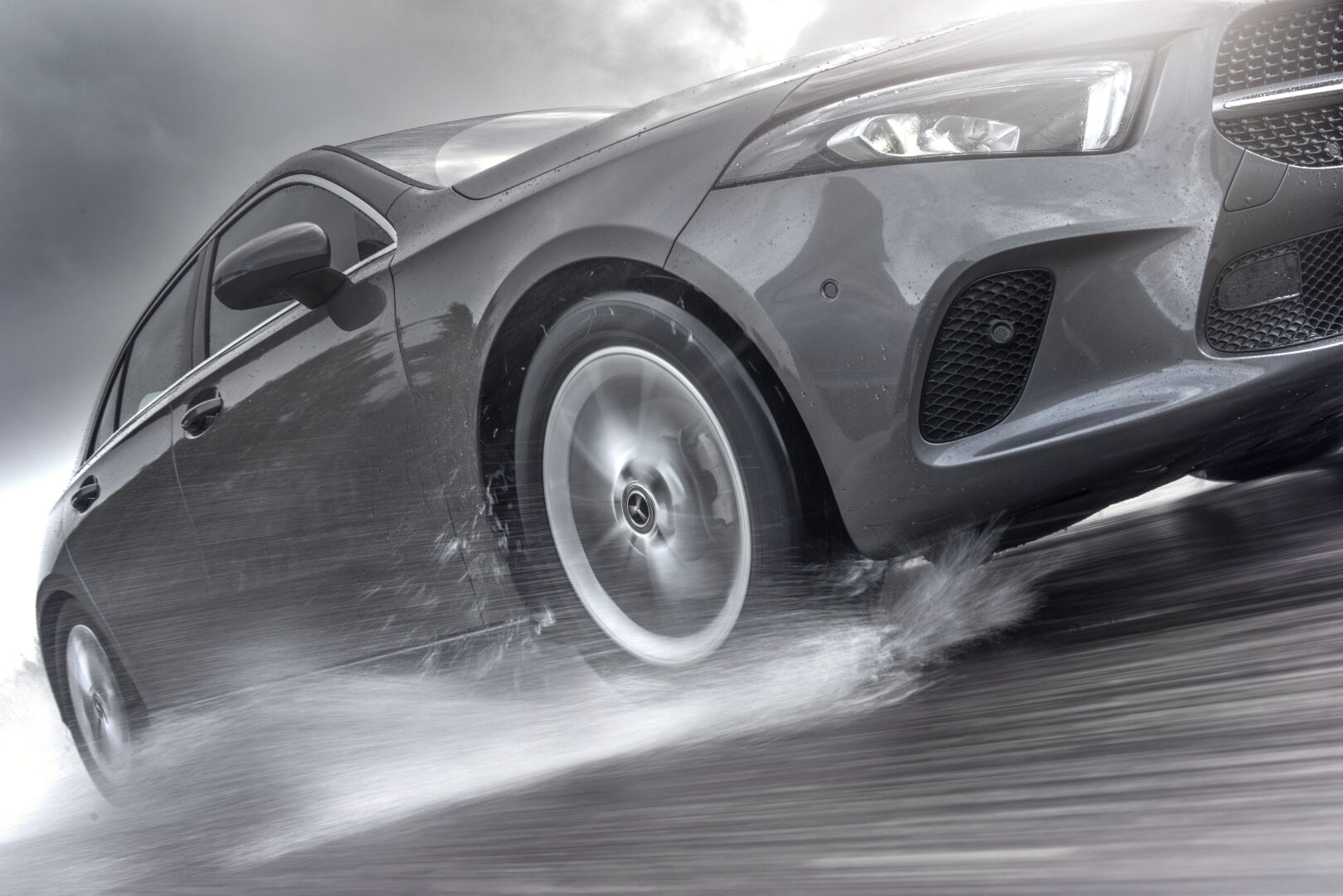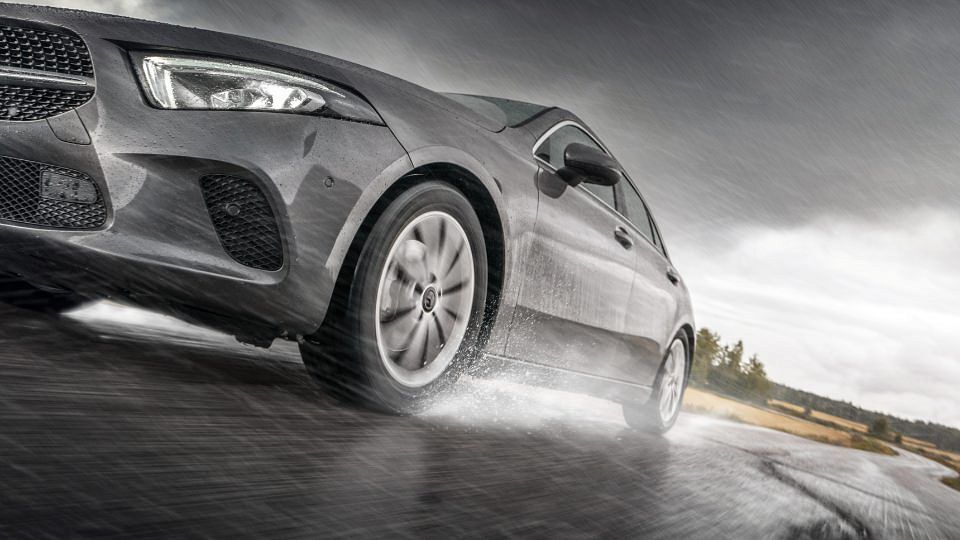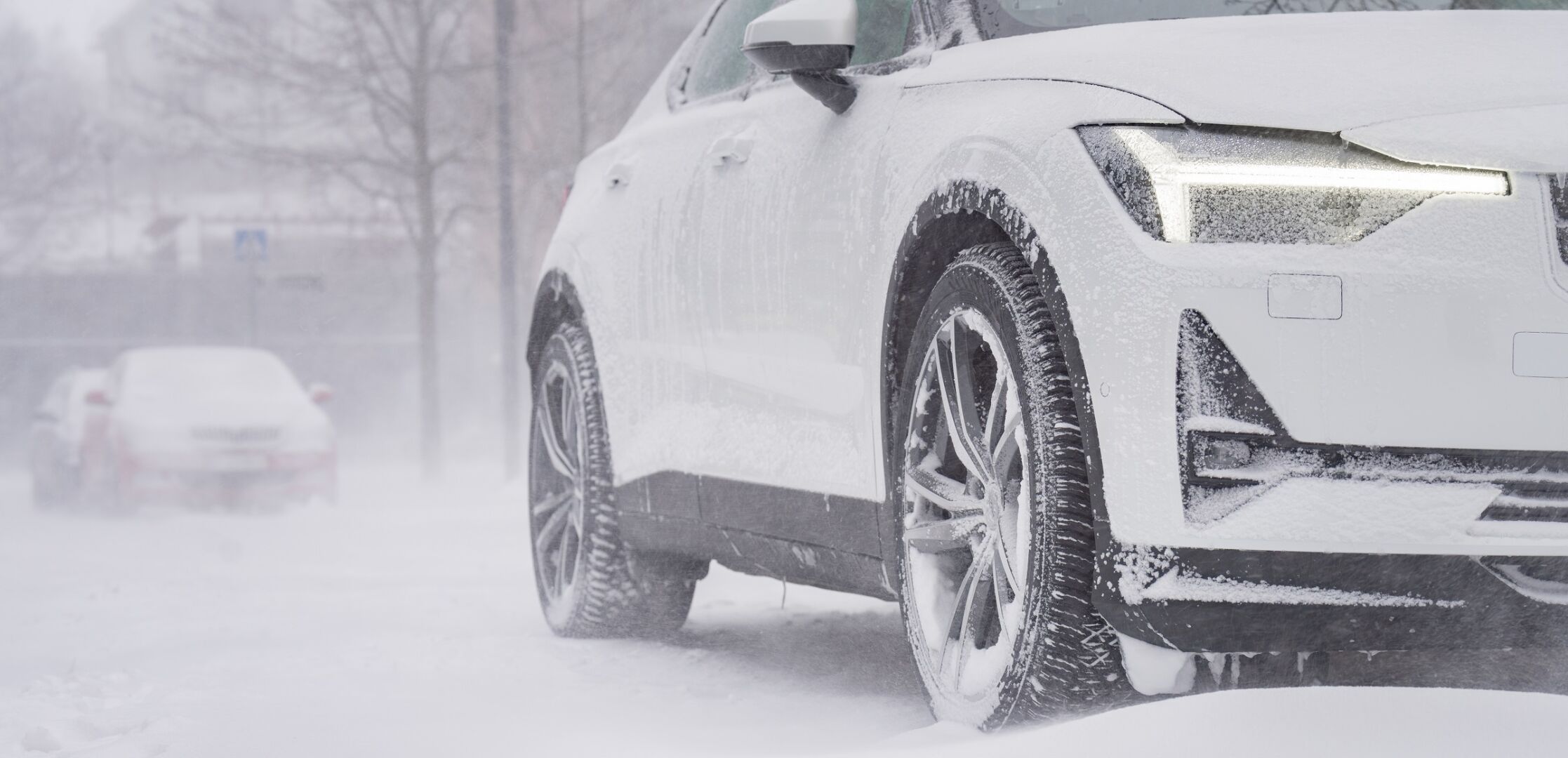
Tires play a big role in preventing hydroplaning. Drive carefully and check your tires to avoid losing control of your vehicle on wet roads.
For maximum safety, wet roads require tires with proper tread depth. The risk of hydroplaning grows notably when it rains in part due to the accumulation of water on the grooves in the road. Hydroplaning risk also increases when your tires lack traction due to suboptimal tread depth. Read more about how to avoid hydroplaning, and what to do if you find yourself driving while there is water on the roads.
What causes hydroplaning?
Hydroplaning is primarily caused by poor road conditions and standing water. As the road surface wears out, the grooves or ruts created by car tires get deeper and more pronounced. More and more water collects in the grooves as they get deeper over time, so try to avoid driving directly on those grooves when there is water on the road. Even just a thin layer of water on the road is enough to put you at risk of hydroplaning.
Hydroplaning occurs when a thin film of water separates the vehicle’s tire from the road. As a result, traction between the tires and the road surface decreases, sometimes making it difficult to keep total control of the vehicle.
In addition to poor road conditions, speed plays a large role in hydroplaning. The role of tires is to channel water so that they are sufficiently in contact with the road. As driving speed increases, the tires cannot channel water as well, and therefore it starts to form a thin layer between the tire treads and the road.

How to react when hydroplaning occurs
There are a few things you as a driver can do to avoid hydroplaning. Avoid standing water and drive mindfully, carefully, and at a controlled speed on wet pavement. You should also turn off cruise control when driving on wet roads or in rain to help prevent hydroplaning. If, despite your best efforts, your tires lose contact with the road and you begin to hydroplane, here are some steps to follow:
-- Stay calm. Keeping a cool head when you lose control of your vehicle might be easier said than done. However, it's important to stay focused on making the right decisions during a hydroplaning situation.
-- Move your foot from the gas pedal. Slowing down without forceful braking requires taking your foot away from the accelerator. Avoid braking suddenly, because it can cause your wheels to lock. Instead, remove your foot from the gas pedal and then apply the brakes gently to regain control of the vehicle. If your vehicle is equipped with anti-lock brakes, those can help you to regain control.
-- Avoid sudden movements and braking. Avoid overcorrecting by steering erratically. Instead, keep a gentle grip on the steering wheel and keep the steering wheel straight. Wait for your tires to regain traction, and for the vehicle to slow down.
-- Regain control and carry on carefully. Experiencing hydroplaning can be scary, so pull over in a safe spot to calm down if needed. If the poor weather conditions persist, continue your journey at lower speeds and avoid puddles and standing water on the road. Also, remember to keep a good distance from the vehicle in front of you.
Panic can lead to poor decision making in a hydroplaning situation. This is why the first thing to remember when hydroplaning is to stay calm.
How the right tires can prevent hydroplaning
In addition to a calm and careful driving style by the driver, the tires on a vehicle have a significant role in preventing hydroplaning. Here’s how your tires influence the risk of hydroplaning:
TREAD DEPTH
More tire tread generally means more traction and control on the road. As the tires wear out, they become less effective at channeling water that gets accumulated on the road. You can work to prevent uneven tire wear by rotating your tires regularly.
Check the tread depth of your tires by placing a penny in the tread with the picture of Abraham Lincoln upside down. If Lincoln’s head remains hidden, at least 2/32 of an inch of tread is still left, and the tires are not too worn to drive with. However, we recommend getting new tires once your tires reach 4/32 inches of tread left. Bring your vehicle (or the set of tires you need checked) to your local tire shop for an expert assessment of your tire tread depth.
TIRE PRESSURE
Under or overinflated tires put you at higher risk of hydroplaning. Improper tire pressure also causes more tire wear, increasing the risk of hydroplaning even further.

TYPE OF TIRE
Reduced risk of hydroplaning is one of many benefits to choosing the right type of tires for the season. Our Tire Buying Guide can help you choose which tire type is best for your area's climate and road conditions.
Did you know? Using winter tires in the summer can increase the risk of hydroplaning compared to using all season tires during summertime. Meanwhile, all season tires are no match for high-quality winter tires in cold and snowy conditions.
TIRE QUALITY
Nokian Tyres designs tires with safety as our priority. Nokian Tyres all-season and all-weather tires help your vehicle avoid hydroplaning by channeling water on the road and preventing it from forming a layer between the road and the tire’s contact area.
Visit your local Nokian Tyres dealer to find safe and comfortable tires for your vehicle.
Please remember that it is the driver’s responsibility to ensure their tires are safe and suitable for their vehicle and to follow the vehicle’s manufacturer´s guidelines for proper use and maintenance. Consult your closest Nokian Tyres dealer or your vehicle’s manufacturer for specific advice.


